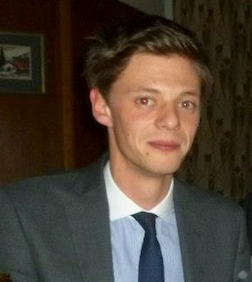27 APRIL 2018
How to introduce your students to forces

Nathan Barker is back with the second in a popular series of blog posts about teaching mechanics. Here, Nathan shares some ideas on how to introduce forces to your students.
“Force diagrams are for me the most important tool for studying dynamics. However, before students can draw diagrams they need a sense of what a force is.
First, using examples they come into contact with on a daily basis, I ask the students to describe what forces they know (from GCSE Science) and what else is happening that is not a force. I typically use a person standing on a horizontal surface, a person standing on an inclined surface, a car at a constant speed, a car accelerating, a ball in motion and a swimmer. After this, but before discussion, we then do a few experiments (throwing a ball vertically upwards, moving between one and two feet whilst standing, putting their hands out and resting on a wall, and pulling some string). The Nuffield Foundation also have some interesting activities for use in the classroom.
We then use these examples in a discussion to tackle any misconceptions about driving forces existing where there are none (the ball in motion) and the direction of the force acting (friction). I also use this as a chance to introduce Newton's laws of motion, getting students to determine which of the examples and situations they have just considered correspond to which of Newton's laws of motion.
Secondly, I have a pulley system set up whilst the students enter the room, hanging vertically with the masses at the same level. Tension, if students have not thought about it before, can cause confusion about the direction in which we take the force. This is a good time to discuss what part of the system of we are modelling with our force diagram. If we just look at one mass, we can discuss weight and tension (I always have some spare string to give to students to pull tight and "feel" the forces from their point of view). However, if we model from the pulley our diagram will be different. This also allows for the opportunity to discuss modelling assumptions (smooth pulley, light string and inextensible).
The use of mini-whiteboards can be very powerful here, as it allows you to see what the students are drawing for their diagrams. Or you could use the black drill questions from the exercises in Chapter 21 and 22 found in the OCR A Student Book 1 to formatively assess the students.
Finally, lift questions are often quite challenging as students assume that they "feel" their weight, rather than the normal reaction force with the surface. After discussions about Newton's Second Law, referring back to the car and the pulley system, we look at Worked Example 22.2 and the video below.
[Short homemade video]
In a Dan Meyer three-act math style, I like to play the video and ask students what they think is going to happen next. The students quickly realise that I'm in a lift and we discuss what I am doing. It has so far happened that someone will ask the questions that I would like them to think about: "Which part of the video is me ascending and which part is me descending in the lift?" This gives a practical example that we can model and look at the different parts of the journey. Through this, we tackle the differences between mass and weight, weight and normal reaction forces and the use of Newton's laws of motion (as they are all represented here for some part of my journey).”
To read more about mechanics and forces, explore our A Level Further Mathematics Mechanics collection for OCR A and AQA.
 |
Nathan currently teaches A Level Mathematics, Further Mathematics and the International Baccalaureate in Jersey after moving from Cambridge University where he was a resource designer for Underground Mathematics (a Department for Education funded project) and worked as a teacher of mathematics for Comberton Academy Trust (now Cam Academy Trust). Nathan is also a member of the Mathematical Association Post-16 subcommittee and is currently completing the pilot Chartered Teacher programme through the Chartered College of Teachers. |
Thank you for your feedback which will help us improve our service.
If you requested a response, we will make sure to get back to you shortly.
×